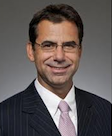
Manufacturing Operations Competitiveness Hot Topic at Siemens Summit
I’m catching up on some travels after taking a long weekend for the Fourth.
At the end of June, I attended the Siemens Automation Summit in New Orleans. Previously, I wrote about Siemens new Customer Services Division based on conversations during the first evening in New Orleans. Watch for your Profibus News coming shortly for a report on the first new sugar refinery built in the U.S. in 40 years that made extensive use of Profibus DP and PA.
Smart Manufacturing
These conferences always kick off with keynote addresses and then attendees split off for specific training or information sessions. User Group leader Dennis Inverso, Principal Consultant at DuPont Engineering, set the tone for the week with a description of DuPont’s Smart Plant vision.
The vision begins with embedding intelligence at plant floor building into a knowledge-enabled enterprise. The point is that all business and manufacturing actions are enabled. Inverso distinctly stated that DuPont is implementing Smart Manufacturing. (see my report here, Smart Manufacturing Leadership Coalition and Smart Manufacturing Blog). They are in the first phase of front end loading the system to eliminate multiple data entry and then using virtual plant technology and engineering efficiency tools.
Manufacturing Competitiveness
Industry Week Editor in Chief Pat Panchak hosted a manufacturing competitiveness panel later in the week. U.S. CEO Helmuth Ludwig set the tone asking “How do we prepare our workforce for the new era of manufacturing renaissance,” “How do we retain all the knowledge that exists within the company now,” and “How do we manage through the entire product/technology lifecycle?”
Raj Batra, president of industry automation division for Siemens in the U.S., pointed to virtualization, lifecycle and science. Innovation is happening around about the intersection points of these. “Early adopters see 50% reduction in time to market.”
He continued, “Retention and attracting best and brightest people is a major problem given that there are no pensions that tie people to a company any longer.” Regarding recruitment, he pointed to Siemens Science Days that encourage kids in primary school to study science, technology, engineering and math (STEM).
Manufacturers need to recognize that aging infrastructure is a cyber security risk, is hard and expensive to maintain, and not as productive. Manufacturing needs to link to product design–to work together with PLM. “We’re doing that,” he said, “trying to make manufacturing a strategic part of an enterprise.”
Jerry Gipson, retired Senior Technology Director at Dow Chemical pointed to a skills gap to be overcome. ” We see more IT, more advanced skill sets required. This will be achieved through education and practice. We see and hear that companies are having difficulty filling jobs, yet many people still want jobs. They may not be matched to the positions. The big takeaway is companies and industry taking more responsibility to fill these gaps. We’re seeing some improved relations with academia.”
Gipson addressed the aging infrastructure point by noting technology is not a solution; it is incorporated as part of a solution. There are both a value promise and risk management aspect. But we need to consider how do we bring our solution to the business people in a context that they can understand the importance. We then must address sustainability of the solution. How do we keep it going?
Bonnie Knopf, president Intrepid Plastics and Intrepid Idea Innovators, SME Board member, noted “SME working on the employee problem by encouraging “geek groups” of employees to work with students. Companies need to pay for memberships of employees to get involved and allow them to attend trade shows and conferences to see what’s new.





